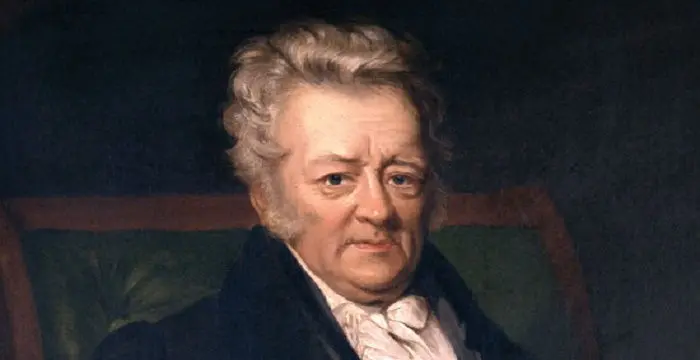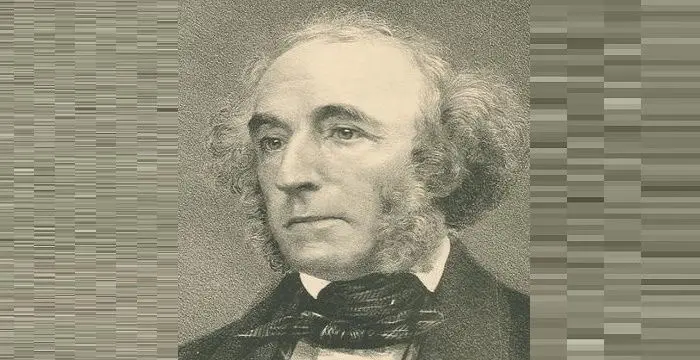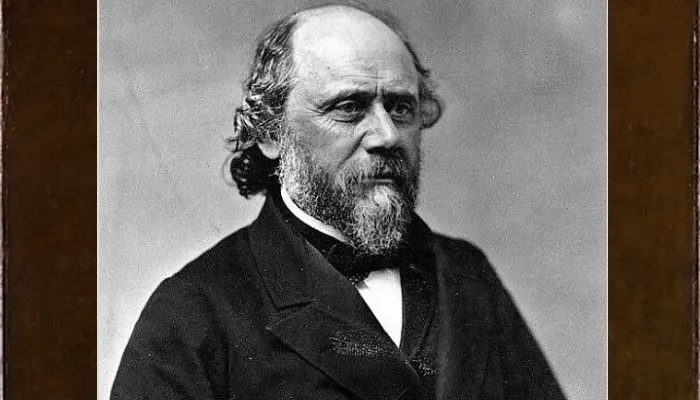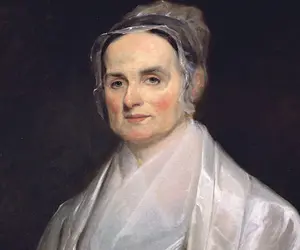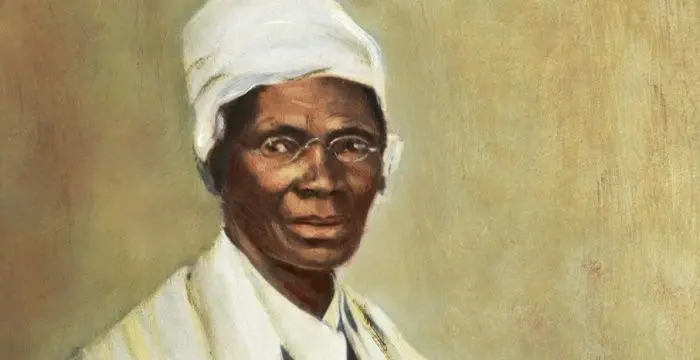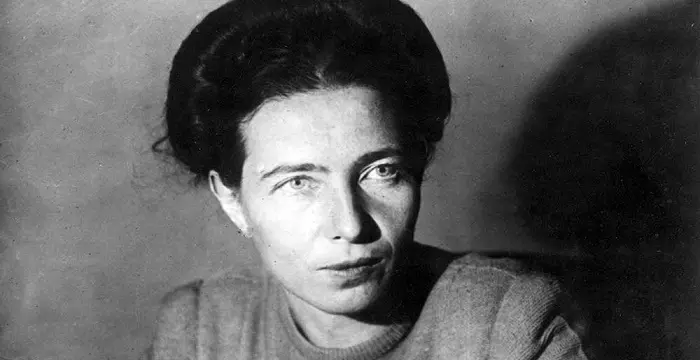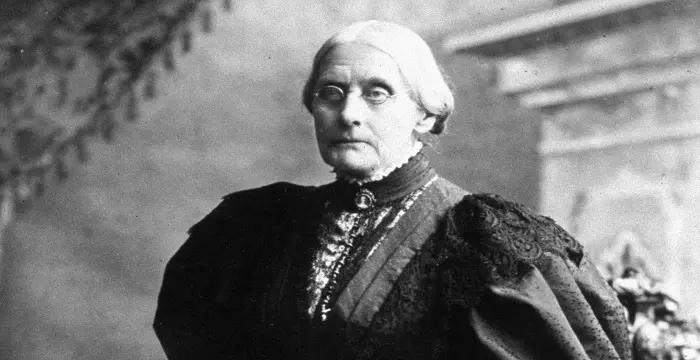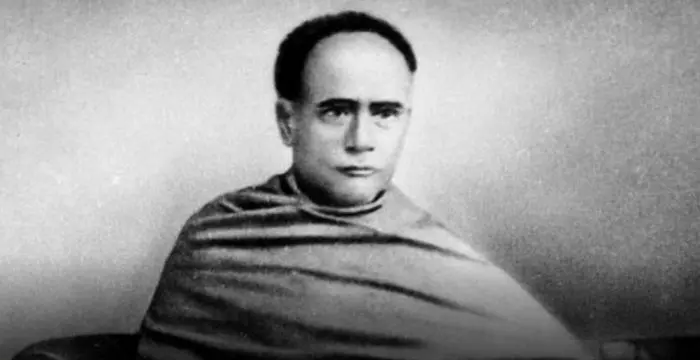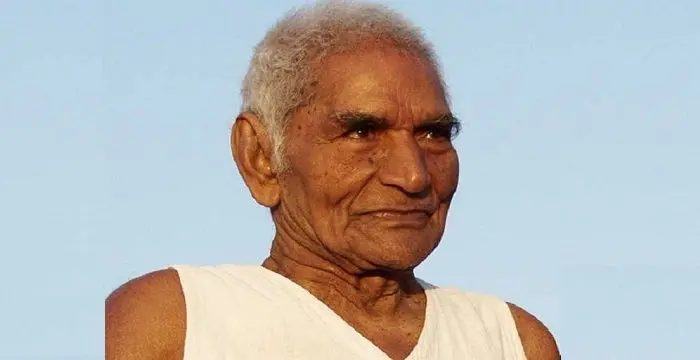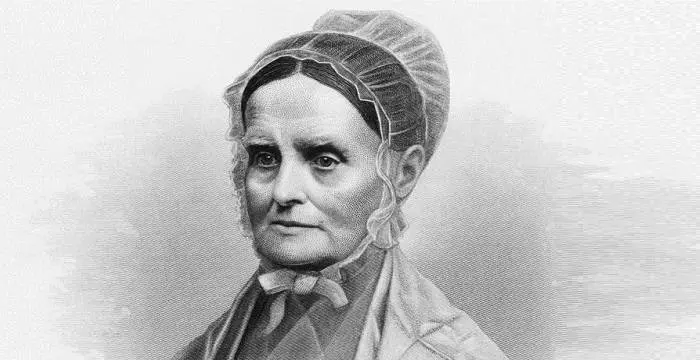
Lucretia Mott - Abolitionist, Facts and Childhood
Lucretia Mott's Personal Details
Lucretia Mott was an American abolitionist, social reformer and a women's rights activist
| Information | Detail |
|---|---|
| Birthday | January 3, 1793 |
| Died on | November 11, 1880 |
| Nationality | American |
| Famous | Feminists, Activists, Women's Rights Activists, Social Reformers, Abolitionist |
| City/State | Massachusetts |
| Spouses | James Mott |
| Siblings | Martha Coffin Wright |
| Known as | Lucretia Coffin Mott |
| Childrens | Thomas Coffin |
| Founder / Co-Founder |
|
| Birth Place | Nantucket, Massachusetts, U.S. |
| Religion | Quaker |
| Gender | Female |
| Father | Thomas |
| Mother | Anna Folger Coffin |
| Sun Sign | Capricorn |
| Born in | Nantucket, Massachusetts, U.S. |
| Famous as | Abolitionist, Women's Rights Activist, Social Reformer |
| Died at Age | 87 |
// Famous Abolitionist
Thomas Clarkson
Thomas Clarkson was an English abolitionist and the main force in bringing about the Slave Trade Act. This biography provides detailed information about his childhood, life, achievements, works & timeline
Granville Sharp
Granville Sharp was a social reformer and a leading British abolitionist. This biography of Granville Sharp provides detailed information about his childhood, life, achievements, works & timeline
Richard Henry Dana Jr.
Richard Henry Dana Jr. was an American lawyer, writer and social activist. This biography provides detailed information about his childhood, life, achievements, works and timeline.
Lucretia Mott's photo
Who is Lucretia Mott?
Lucretia Coffin Mott was a famous American feminist and social reformer in the nineteenth-century America. Though pictured in history as a gentle Quaker lady, her activities infuriated ministers, journalists, politicians, urban mobs, and even her fellow Quakers. From her home in Philadelphia, she travelled usually accompanied by her husband who supported her activism and made speeches supporting abolition. She often sheltered runaway slaves in her home. She helped organize women's abolitionist societies, since the anti-slavery organizations would not admit women as members. Selected as a delegate to the World's Anti-Slavery Convention in London, she discovered that it was controlled by anti-slavery factions opposed to public speaking and action by women. She became the "moving spirit" of the first women's rights convention at Seneca Falls. Her commitment to women's rights never came in the way or diluted her support for abolition or racial equality. She envisioned women's rights not as a new and separate movement but rather as an extension of the universal principles of liberty and equality. Her long-term collaboration with white and black women in the Philadelphia Female Anti-Slavery Society was remarkable. She was a pacifist too and opposed the war with Mexico.
// Famous Feminists
Sojourner Truth
Sojourner truth was an African American abolitionist who was the first black woman to win a case against a white man. This biography provides detailed information about her childhood, life, achievements, works & timeline.
Simone de Beauvoir
Simone de Beauvoir was an eminent French writer, intellectual, activist, and philosopher. This biography profiles her childhood, life, thoughts, achievements and timeline.
Susan B. Anthony
Susan B. Anthony was an American feminist who played a major role in the women's suffrage movement. This biography of Susan B. Anthony provides detailed information about her childhood, life, achievements, works & timeline
Childhood & Early Life
Lucretia Coffin was born on January 3, 1793 in Nantucket, Massachusetts, as the second child of eight children to Anna and Thomas Coffin. Her father was a seaman while her mother ran a store.
After the capture of his ship by a Spanish man-of-war, her father retired from the sea in 1803 and the next year moved the family to Boston, where he became a merchant.
At thirteen, sent to the Nine Partners Quaker Boarding School in Dutchess County, New York, run by the Society of Friends, she became an avid follower of Elias Hicks, a fiery Quaker abolitionist.
Career
Lucretia became a teacher's assistant at Nine Partners and was troubled by the unfairness in salary differences between male and female instructors. Here, she met teacher James Mott, the grandson of Nine Partners' superintendent.
The family moved in 1809 to Philadelphia, where Thomas Coffin entered into business, investing all his capital in a factory for the manufacture of cut nails, a new product of the Industrial Revolution.
James Mott boarded with the family and became her father's partner and married Lucretia. In 1815, her father died, leaving her mother with heavy debts. The Motts also suffered financial hardship.
Anna Coffin set about shopkeeping again, and Lucretia taught school while James worked in his uncle's cotton mill, sold plows, and worked as a bank clerk before entering the wholesale business.
James boycotted slave products and traded in wool rather than cotton. Lucretia suddenly began speaking in Meeting, simply but powerfully, and in 1821 she was formally recognized as a minister.
Mott considered slavery as an evil and refused to use slavery-produced goods. In 1821, she became a Quaker minister and traveled extensively as a minister, and gave sermons which emphasized the presence of the Divine within every individual.
In 1833, her husband helped found the American Anti-Slavery Society and later with the help of other women, she founded the Philadelphia Female Anti-Slavery Society.
Despite social persecution by Anti- abolitionist, she managed her household budget, extended hospitality to guests, including fugitive slaves, and donated to charities, organized fairs to raise awareness and revenue for the anti-slavery movement.
There was division among the abolitionist regarding public speaking by women. The Congregational Church General Assembly regarded that it was a defiance of St. Paul's instruction for women to keep quiet in church.
Mott attended all three national Anti-Slavery Conventions of American Women between 1837 and 1839. During the convention in Philadelphia, a mob destroyed Pennsylvania Hall. The women delegates linked arms to exit the building safely.
In 1838, the mob targeted her home and Black institutions and neighborhoods in Philadelphia. As a friend redirected the mob, Mott waited in her parlor, willing to face her violent opponents.
In 1840, she attended the World's Anti-Slavery Convention in London as one of six women delegates. American women were excluded from participating and required to sit in a segregated area despite protests
Activist Elizabeth Cady Stanton admired her and the two women became friends and allies. One Irish reporter described her, ‘Lioness of the Convention’ and she returned with renewed vigor.
She continued an active public lecture schedule, with covering major northern cities of New York and Boston, as well as slave-owning states, with speeches in Baltimore, Maryland and other cities in Virginia.
She arranged to meet with slave owners to discuss the morality of slavery. In the District of Columbia, her lecture was attended by 40 Congressmen and had a personal audience with President John Tyler
After the Civil War, she was elected the first president of the American Equal Rights Association that advocated universal suffrage, but resigned over differences between factions led by Elizabeth Stanton and Susan B. Anthony
In 1864, she along with several other Quakers founded Swarthmore College located near Philadelphia, Pennsylvania. One of the earliest co-educational colleges, it remains one of the premier liberal-arts colleges in the United States.
For years, she was vice president of the Universal Peace Union. In 1870 she was elected president of the Pennsylvania Peace Society, an office she held until her death.
In 1876, the centennial of the Declaration of Independence, she presided on the Fourth of July at the National Woman Suffrage Association convention in Philadelphia, where she, Stanton, and Anthony demanded women's rights
Major Works
In 1848, Mott and Stanton organized the first public women's rights convention at Seneca Falls, New York. Mott signed the Seneca Falls Declaration of Sentiments on women's "right to the elective franchise”.
In 1850, she published her speech, Discourse on Woman, about restrictions on women. She declared that God intended that man and woman be equal and proved her points from anecdotes in the Testaments.
Personal Life & Legacy
In 1811, Lucretia Coffin married James Mott at Pine Street Meeting in Philadelphia. Together they had six children. They lost their second child, Thomas Coffin at age two.
Mott died of pneumonia at her home in Pennsylvania and was buried in the Quaker Fairhill Burial Ground, North Philadelphia. She is commemorated in a sculpture by Pablo Picasso at the Carrier Dome, Syracuse.
Trivia
Her views of marriage can be gleaned from this quote, “In a true marriage relation the independence of the husband and the wife is equal, their dependence mutual, and their obligations reciprocal”.
This American women’s right advocate said, “It is not Christianity, but priest-craft that has subjected woman as we find her”.
// Famous Social Reformers
Ishwar Chandra Vidyasagar
Ishwar Chandra Vidyasagar was an Indian polymath and a social reformer. This biography of Ishwar Chandra Vidyasagar provides detailed information about his childhood, life, achievements, works & timeline.
Granville Sharp
Granville Sharp was a social reformer and a leading British abolitionist. This biography of Granville Sharp provides detailed information about his childhood, life, achievements, works & timeline
Baba Amte
Baba Amte was an Indian social activist best remembered for his work for rehabilitation of leprosy patients. This biography of Baba Amte provides detailed information about his childhood, life, achievements, works & timeline.
Lucretia Mott biography timelines
- // 3rd Jan 1793Lucretia Coffin was born on January 3, 1793 in Nantucket, Massachusetts, as the second child of eight children to Anna and Thomas Coffin. Her father was a seaman while her mother ran a store.
- // 1803After the capture of his ship by a Spanish man-of-war, her father retired from the sea in 1803 and the next year moved the family to Boston, where he became a merchant.
- // 1809The family moved in 1809 to Philadelphia, where Thomas Coffin entered into business, investing all his capital in a factory for the manufacture of cut nails, a new product of the Industrial Revolution.
- // 1811In 1811, Lucretia Coffin married James Mott at Pine Street Meeting in Philadelphia. Together they had six children. They lost their second child, Thomas Coffin at age two.
- // 1815James Mott boarded with the family and became her father's partner and married Lucretia. In 1815, her father died, leaving her mother with heavy debts. The Motts also suffered financial hardship.
- // 1821James boycotted slave products and traded in wool rather than cotton. Lucretia suddenly began speaking in Meeting, simply but powerfully, and in 1821 she was formally recognized as a minister.
- // 1821Mott considered slavery as an evil and refused to use slavery-produced goods. In 1821, she became a Quaker minister and traveled extensively as a minister, and gave sermons which emphasized the presence of the Divine within every individual.
- // 1833In 1833, her husband helped found the American Anti-Slavery Society and later with the help of other women, she founded the Philadelphia Female Anti-Slavery Society.
- // 1837 To 1839Mott attended all three national Anti-Slavery Conventions of American Women between 1837 and 1839. During the convention in Philadelphia, a mob destroyed Pennsylvania Hall. The women delegates linked arms to exit the building safely.
- // 1838In 1838, the mob targeted her home and Black institutions and neighborhoods in Philadelphia. As a friend redirected the mob, Mott waited in her parlor, willing to face her violent opponents.
- // 1840In 1840, she attended the World's Anti-Slavery Convention in London as one of six women delegates. American women were excluded from participating and required to sit in a segregated area despite protests
- // 1848In 1848, Mott and Stanton organized the first public women's rights convention at Seneca Falls, New York. Mott signed the Seneca Falls Declaration of Sentiments on women's "right to the elective franchise”.
- // 1850In 1850, she published her speech, Discourse on Woman, about restrictions on women. She declared that God intended that man and woman be equal and proved her points from anecdotes in the Testaments.
- // 1864In 1864, she along with several other Quakers founded Swarthmore College located near Philadelphia, Pennsylvania. One of the earliest co-educational colleges, it remains one of the premier liberal-arts colleges in the United States.
- // 1870For years, she was vice president of the Universal Peace Union. In 1870 she was elected president of the Pennsylvania Peace Society, an office she held until her death.
- // 1876In 1876, the centennial of the Declaration of Independence, she presided on the Fourth of July at the National Woman Suffrage Association convention in Philadelphia, where she, Stanton, and Anthony demanded women's rights
// Famous Activists
Temple Grandin
Temple Grandin is a well-known American writer, autistic activist and animal expert. This biography profiles her childhood, life, achievements, career and timeline
Susan Sontag
Susan Sontag is an American critical essayist, cultural analyst, novelist, political activist, filmmaker and playwright of international repute. Read on to find out more about her childhood, career, profile and timeline.
Serj Tankian
Serj Tankian is a famous American singer-songwriter and member of the band, ‘System of a Down’. This biography profiles his childhood, music career, life, achievements and timeline.
Gaia Wise
Gaia Wise is an actress, environment activist and the daughter of Emma Thompson. Check out this biography to know about her childhood, family, personal life, including her age, birthday, etc.
Sojourner Truth
Sojourner truth was an African American abolitionist who was the first black woman to win a case against a white man. This biography provides detailed information about her childhood, life, achievements, works & timeline.
Garry Kasparov
Garry Kasparov is a Russian chess Grandmaster considered by many to be the greatest chess player of all time. This biography of Garry Kasparov provides detailed information about his childhood, life, achievements, works & timeline.
Lucretia Mott's FAQ
What is Lucretia Mott birthday?
Lucretia Mott was born at 1793-01-03
When was Lucretia Mott died?
Lucretia Mott was died at 1880-11-11
Where was Lucretia Mott died?
Lucretia Mott was died in Cheltenham, Pennsylvania, U.S.
Which age was Lucretia Mott died?
Lucretia Mott was died at age 87
Where is Lucretia Mott's birth place?
Lucretia Mott was born in Nantucket, Massachusetts, U.S.
What is Lucretia Mott nationalities?
Lucretia Mott's nationalities is American
Who is Lucretia Mott spouses?
Lucretia Mott's spouses is James Mott
Who is Lucretia Mott siblings?
Lucretia Mott's siblings is Martha Coffin Wright
Who is Lucretia Mott childrens?
Lucretia Mott's childrens is Thomas Coffin
Which company or organization was founded by Lucretia Mott?
Lucretia Mott was the founder/co-founder of Northern Association for the Relief and Employment of Poor Women in Philadelphia
What is Lucretia Mott's religion?
Lucretia Mott's religion is Quaker
Who is Lucretia Mott's father?
Lucretia Mott's father is Thomas
Who is Lucretia Mott's mother?
Lucretia Mott's mother is Anna Folger Coffin
What is Lucretia Mott's sun sign?
Lucretia Mott is Capricorn
How famous is Lucretia Mott?
Lucretia Mott is famouse as Abolitionist, Women's Rights Activist, Social Reformer
